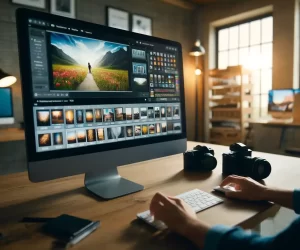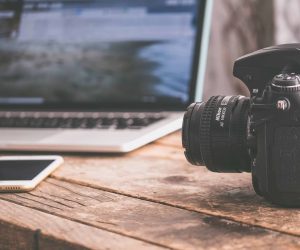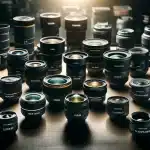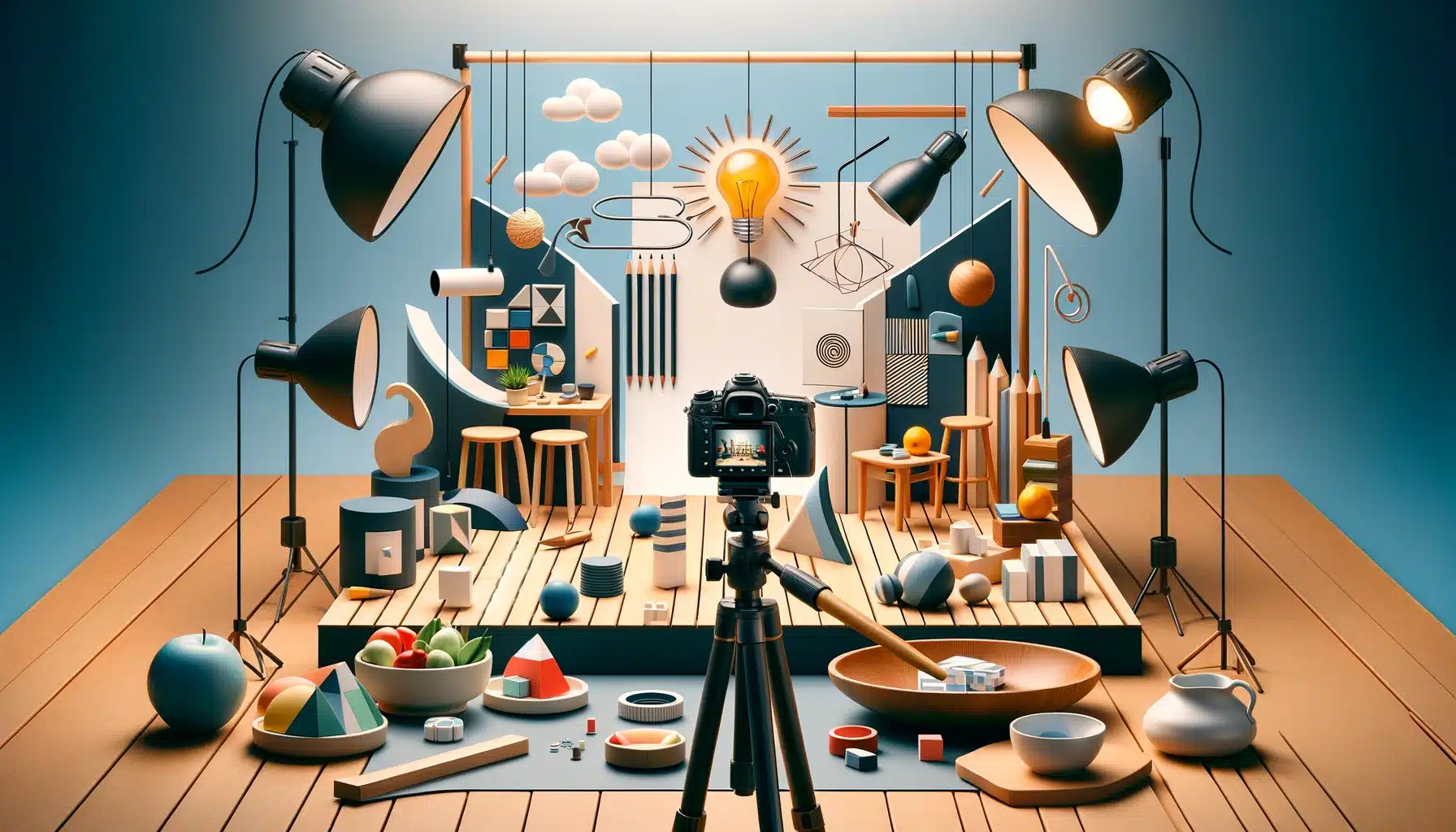
Introduction To What is a Composition In Photography
Composition in photography refers to how all the elements in a photo come together to create a visually appealing image. It’s like arranging pieces of a puzzle to tell a story or convey a feeling.
So, what is a composition in photography? It involves considering factors like the Rule of Thirds, where you divide your photo into nine equal parts and place important elements along these lines. You also think about leading lines that guide the viewer’s eye through the photo, creating depth and interest.
Real-Life Example: Think of taking a picture of a beautiful landscape. You carefully position the mountains, trees, and the sky in the frame to create a balanced and captivating scene. This arrangement of elements is what we call image composition.
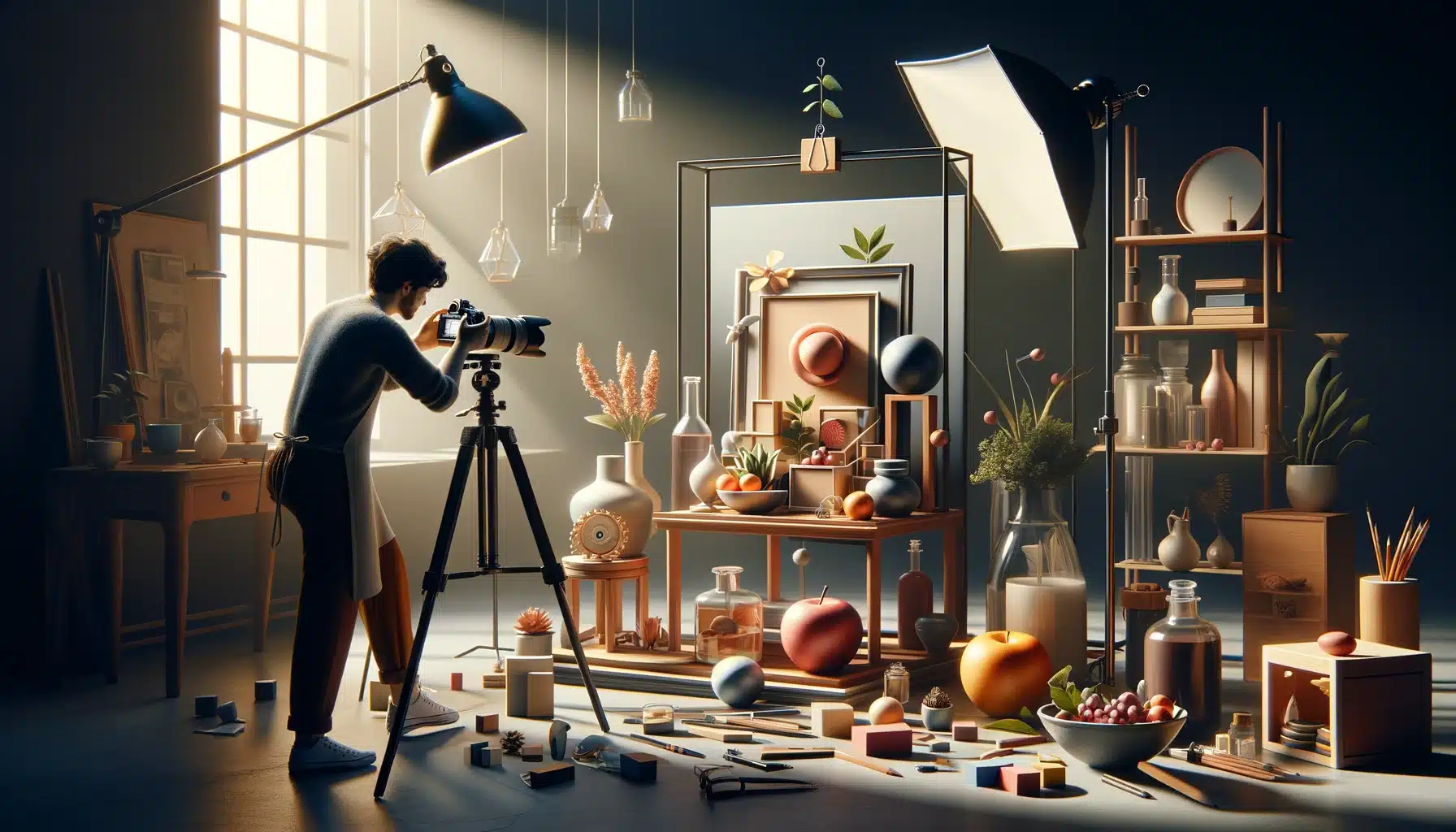
Table of Contents
Why Is Composition Important?

Image composition is super important because it makes your photo look perfect. It’s like the secret recipe for a delicious cake. Without it, things might not look as nice. Good image composition can make anyone looking at your photo see precisely what you want them to see.
Here are a few reasons why composition is important:
1. Catching the Viewer's Eye
First, let’s dive deeper into why the photo’s composition is crucial. When we talk about setting up a picture, it’s all about making deliberate choices to organize elements in a visually pleasing way. This is where many wonder, “What is a composition in photography?” It’s similar to organizing pieces in a game or arranging a room to make it more inviting. A professional photo draws people in because everything looks appealing and intentional, making viewers want to look longer and explore every part of the image.
2. Telling a Story Through Your Photos
Another vital point is storytelling. The composition of the photo is more than just about placing things neatly; it’s about conveying a message or a feeling. Just as a good story captivates its audience, a well-composed photo captivates its viewers. Through photography composition, your picture can tell the story of a roaring car or a peaceful beach, making viewers feel the speed or the tranquillity.
3. Balancing Your Photographs
Balance is also key in photography composition. A balanced photo, where no single part overwhelms the others, is like having a balanced lifestyle. Just as you find harmony in your daily activities, finding balance in your photo composition creates harmony within the picture, making it more pleasing to the eye.
4. Expressing Your Unique Style
Furthermore, your image composition can showcase your style. What is a composition in photography if not a reflection of how you see the world? Just as your clothing reflects your style, the way you compose your photos reflects your unique perspective. This is your chance to show your view of the world through the photo’s composition.
5. Making Memories Last with Your Photos
Lastly, making your photos memorable is a huge part of why the composition of the photo matters. A well-composed photo stands out and stays in people’s memories, much like a catchy song. Mastering the photo’s composition makes your images stick in the viewer’s mind.
The Elements of Image Composition
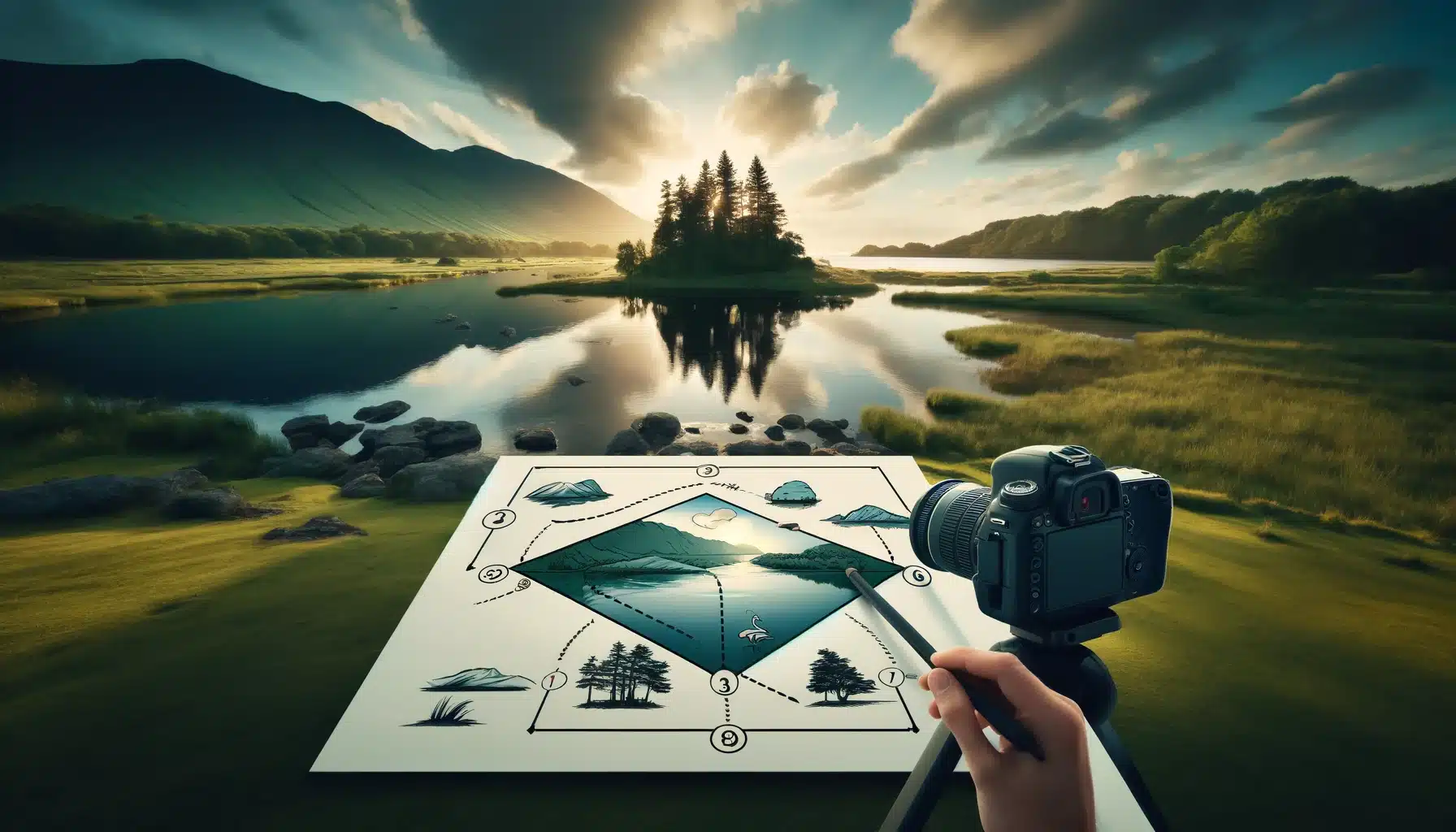
Since now you know what a composition in photography is, let’s talk about its elements. When we talk about composition, we’re talking about how all the different parts of your image structuring fit together to create a great shot. Each object in your photo, no matter how small or large, plays a part in the Photographic layout.
- Points: Think of points as tiny spots that grab your attention. In composition in photography, a point could be where two lines meet or a bright star in the night sky. Though small, these points can draw our eyes and add interest to the composition of the photo.
- Lines: Lines guide your eyes through the picture, like a path through a garden. They can be anything from the edge of a road to the top of a mountain. Lines help connect different parts of your Visual layout in photography, leading the viewer's eye and making the image feel more connected.
- Shapes: Shapes can be anything from the circle of the moon to the outline of a face. They add variety and can evoke different feelings, making the composition of the photo more engaging and meaningful.
- Color: Colors affect the mood and feel of your photo. Warm colors like red and yellow can make your picture feel lively and energetic, while cool colors like blue and green can make it feel calm and serene.
- Tone: This is all about the lightness or darkness in your photo. Playing with tones can add drama and emotion to your Photographic framing, helping to set the overall mood. You can also use any editor like Lightroom to set the tones of your photo.
Relationships Between Objects
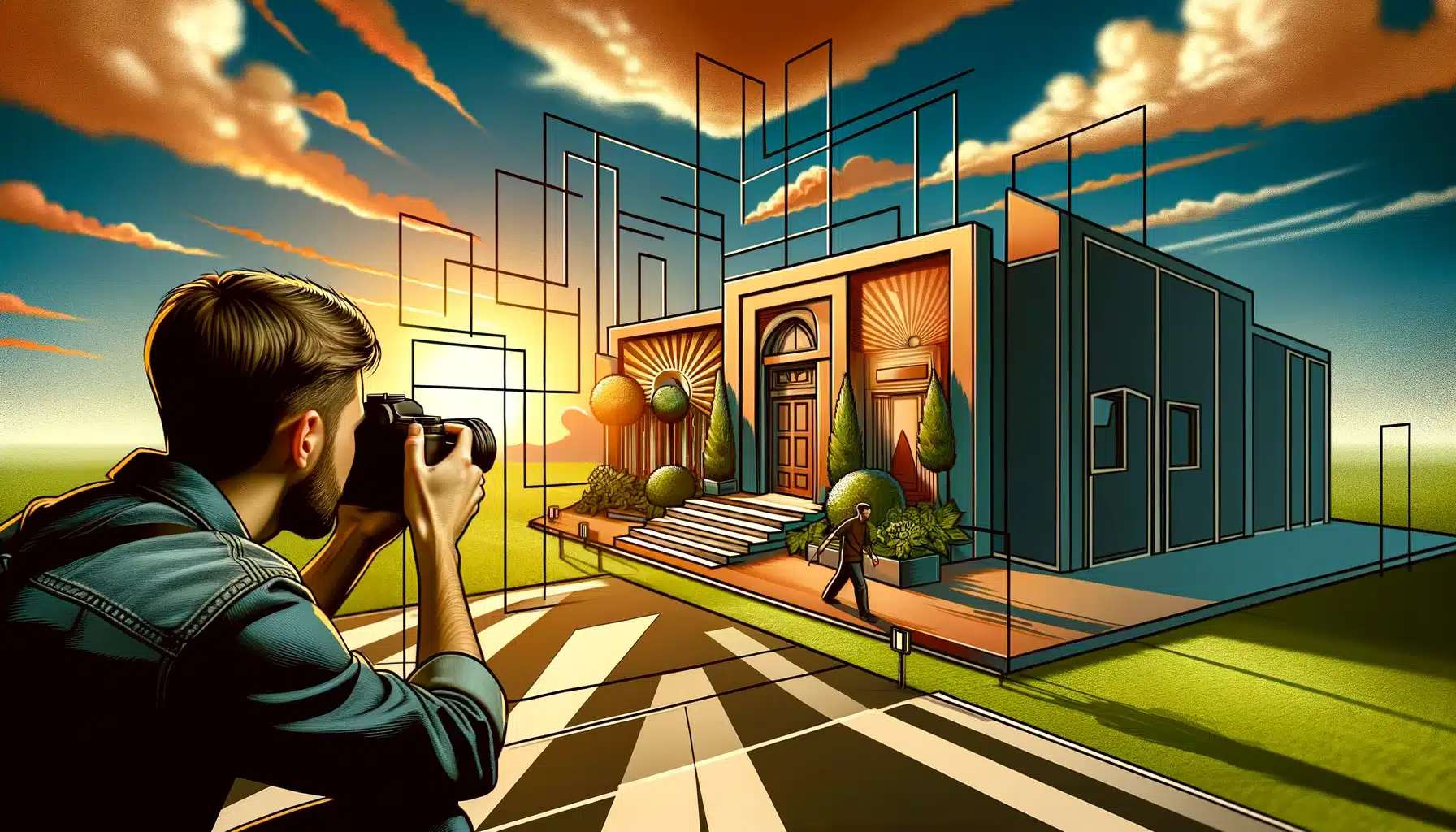
Now, let’s talk about how these elements relate to each other in the composition of the photo:
- Distance: This is about how far apart or close together the elements in your photo are. Managing the distance between elements can help your composition of the photo feel more organized and clear.
- Balance: This is about making sure no part of your photo overwhelms the other parts. A well-balanced composition of the photo feels just right and pleasing to look at.
- Space: In photographic framing, we think about positive space (the main subjects) and negative space (the background). Finding the right balance between the two can make your composition of the photo more striking.
- Patterns: Repeating shapes, colors, or lines can tie your photo together and make it more interesting. Patterns add a sense of harmony and rhythm to the composition of the photo.
Remember, composition in photography is all about how you choose to arrange these elements. By thinking about each one and how they interact, you can take your photos from good to great!
The Role of Light in Photographic Composition

Light plays a crucial role in how we set up our photos, also known as composition in photography. It’s like the artist’s paintbrush, helping shape the image composition. Here’s how it impacts your photo:
- Direction: In image structuring, where the light comes from can make a big difference. Light from behind can create shadows, adding depth and drama to your photo. But light from the front can make everything clear and bright, making the subject stand out.
- The Type of Light: The type of light matters, too. Soft, gentle light can give your photos a dreamy feel, perfect for portraits. On the other hand, bright sunlight can create bold contrasts, ideal for capturing dynamic scenes.
- Time: The time of day affects how the light behaves, influencing your composition in photography. During the golden hour—just before sunset or after sunrise—the warm, golden light adds a magical touch to your photos, enhancing their overall beauty.
- Playing with Light: Sometimes, light itself can be the star of your photo. You can have fun with light sources, reflections, and shadows to create cool effects and make your photo unique.
| Aspect of Light | Camera Setting | Effect on Photo |
|---|---|---|
| Direction | Lighting Setup | Adjustments to the direction of light can emphasize texture or flatten features. |
| Type of Light | White Balance | Tailoring white balance settings can enhance the mood by matching the light type (soft/dreamy or bright/contrasty). |
| Time of Day | Exposure Time | Varying the exposure time captures the essence of different times (e.g., the golden hour’s warmth). |
| Creative Play | Aperture & ISO | Manipulating aperture and ISO settings allows for experimentation with depth of field and light sensitivity, exploring reflections and shadows. |
By understanding the light effects and how to work with them, you can create stunning photos that capture the mood and tell captivating stories.
Tips for Finding the Right Composition

Finding the right composition in photography can make a big difference in how your photos turn out. It’s all about how you arrange the elements in your picture to make it look its best. Here are some tips for finding the right composition for your snapshots:
Look For Inspiration
Before you start taking pictures, spend a bit of time getting inspired by different kinds of art. Think about taking a painting class or looking at some classic paintings. Imagine how you would take pictures of similar scenes with your camera.
Also, find inspiration in abstract or impressionist art. Notice how they use light and arrange things in their paintings, and think about how you can use those ideas in your photos. Seeing art that isn’t photography can really help you get better at setting up your own photos.
Do Some Research
While it’s great to be spontaneous, having a plan before you go out to take photos is really important. Do some homework on the place you’re going to so you know what to expect and can use your time well.
If you’re going outside, look into things like walking paths and when the sun will set. If you’re taking pictures of people, check out the area first to find the nicest places for your photos.
Researching and planning your shoot is a practical step towards understanding what a composition in photography is—it prepares you to make important choices about arranging elements in your frame.
Arrive Early
Give yourself plenty of time to explore and find the perfect shot. Arriving early allows you to familiarize yourself with the surroundings and discover unique angles or perspectives.
Taking the time to arrive early and scout your location can be a crucial part of discovering what is a composition in photography, as it lets you see how different elements can come together in the most visually appealing way and adjust your image composition accordingly.
Researching and planning your shoot is a practical step towards understanding what a composition in photography is—it prepares you to make important choices about arranging elements in your frame.
Composition Strategies for Different Types of Photography
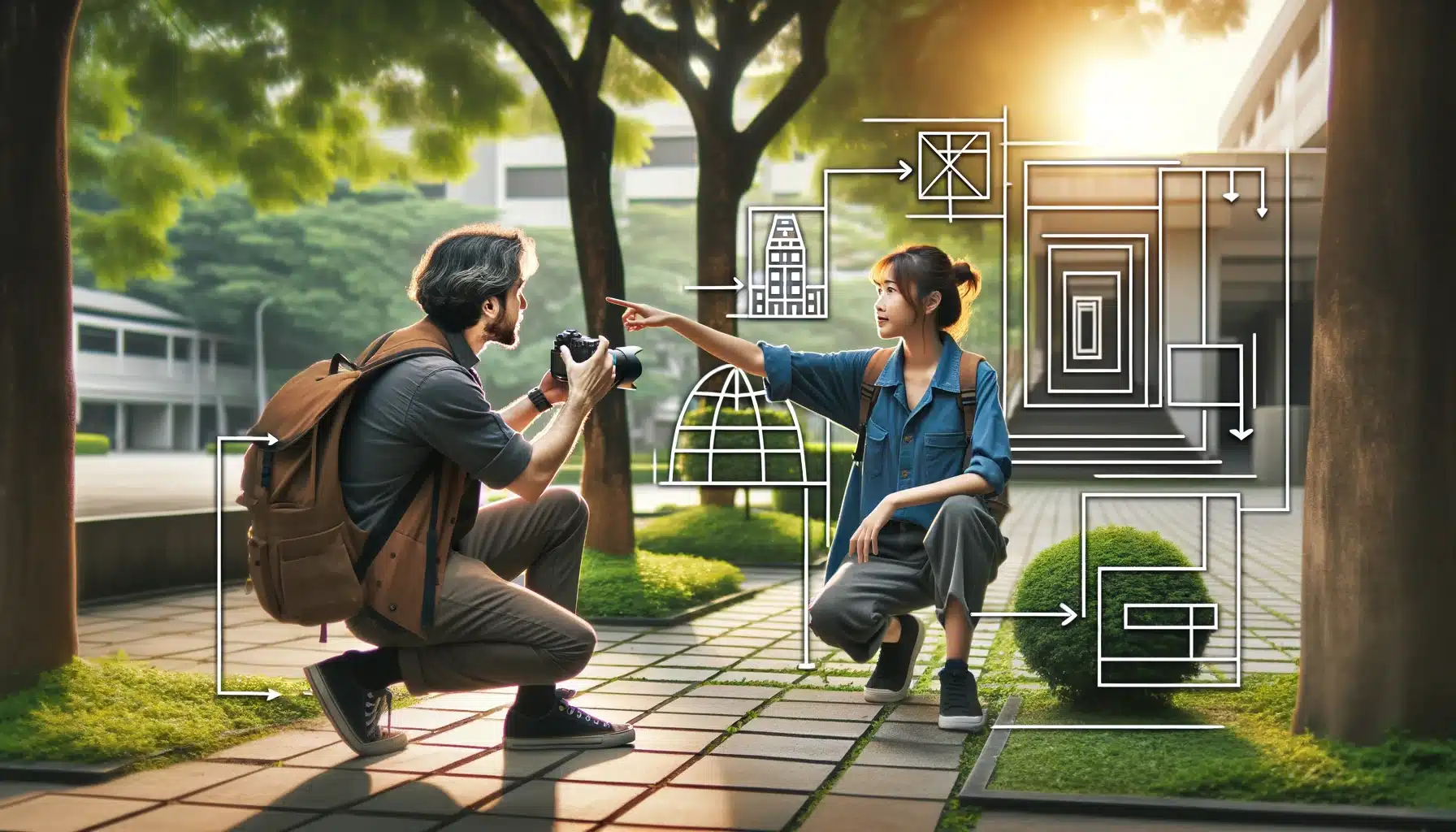
Let’s dive into how you can set up your pictures using different types of photography. Remember, how you arrange things in your photo is called composition in photography. Good picture composition can turn a regular picture into something special.
1. Portrait Photography
When doing portrait photography, the composition in photography focuses on showing the person’s face or expression. In photography composition for portraits, keep the person’s eyes level around the top third line of your frame.
This makes the photo feel balanced. Also, ensure a little space above their head so they don’t feel squished. Use a simple background so the person stands out and becomes the main focus of your photography composition.
2. Sports Photography
Sports photography composition is all about action and energy. Try to capture your subject moving into the frame rather than out of it. This means if someone is running to the right, you should have more space on the right side of the photo. It makes the picture feel more dynamic. Also, try to get down low or find an interesting angle to make your sports photos stand out. This adds excitement to your photography composition.
3. Street Photography
Street photography composition captures life as it happens. It can be tricky since you can’t control the scene. But you can use composition in photography to tell a story. Look for interesting lines, like sidewalks or streetlights, to guide the viewer through the photo.
Capture expressions and moments that stand out in everyday life. And remember, timing is everything in street photography, so be ready to snap the picture at the right moment.
| Type of Photography | Main Focus |
|---|---|
| Landscape Photography | Showcasing the vastness and beauty of natural scenery. |
| Portrait Photography | Highlighting the person’s face or expression. |
| Sports Photography | Capturing the action, energy, and movement of the sport. |
| Still Life Photography | Creating an appealing arrangement of inanimate objects. |
| Street Photography | Documenting life as it happens, telling a story of the moment. |
No matter what kind of photography you’re into, good photography composition is key. It helps tell your story and shows off your subjects in the best way possible. Keep practicing different compositions in photography strategies, and you’ll see a big difference in your photos!
Common Composition Mistakes and How to Fix Them

When we take photos, sometimes they don’t turn out the way we want. This can be because of small mistakes in how we set up the picture. This setup is what we call composition in photography. Let’s talk about some common mistakes people make and how to fix them. Remember, fixing these mistakes can help your photos look much better.
Not Paying Attention to the Background
Sometimes, the background of a photo can be too busy or distracting. This takes away from the main thing you’re trying to show. Look at your background before you take the photo. Try to find a spot where the background is simple and won’t take attention away from your main subject. This is a basic part of understanding what is a composition in photography—making sure your subject stands out.
Everything Is in the Middle
Putting the thing you’re taking a picture of right in the middle can sometimes make the photo feel boring. Try moving your subject off to one side a bit. This can make your photo more interesting to look at. This idea comes from a rule in what is a composition in photography called the “Rule of Thirds.” Imagine your photo is divided into nine equal parts by two vertical and two horizontal lines. Try to place your subject along these lines or where they cross
Forgetting About Lighting
Lighting is super important in photos. Bad lighting can ruin an otherwise good picture. Make sure there’s enough light on your subject. Early morning or late afternoon light is usually the best for photos. If you’re inside, try using lamps or opening windows to let in more light.
Too Much Going On
When there are too many things in a photo, it can be hard to tell what you’re supposed to look at. Before you take the picture, think about what you really want to show. Try to keep only that in your photo. If there are things you don’t need, move them out of the frame or change your position to leave them out.
By knowing about these common mistakes and how to fix them, you’re on your way to taking better photos with collage in Lightroom.
Understanding what is a composition in photography is all about learning how to arrange the things in your photos to make them look as good as they can. Keep practicing, and you’ll see improvement in no time!

FAQs Of What is a Composition in Photography
How can I get better at understanding what is a composition in photography?
Practice is the best way to get better. Try taking lots of photos with different setups. Look at photos by people who are good at photography to get ideas. And don’t be afraid to try new things with your photos.
Is it okay to not follow the rules of composition in photography sometimes?
Sometimes, breaking the rules can make your photos more interesting. But it’s good to learn the rules first so you know why and how you’re breaking them to make your photos look the way you want.
Does a composition in photography matter in both color and black-and-white photos?
Yes, the composition matters in all types of photography. In black-and-white photos, aspects like contrast, texture, and lighting play even bigger roles in enhancing the composition since color is not present to guide the viewer’s eye.
Conclusion
In wrapping up, mastering composition in photography is like learning the language of visual storytelling. It’s about arranging elements within the frame to create images that captivate and resonate with viewers.
Personally, I remember a time when I struggled to understand the importance of composition in my photography. However, as I delved deeper into the principles and techniques, I began to see a noticeable improvement in my photos. By implementing strategies like the Rule of Thirds, leading lines, and balancing elements, I was able to elevate my photography from average to exceptional.
Have a nice photoshoot!
Course
Get the latest version of Photoshop & Lightroom


